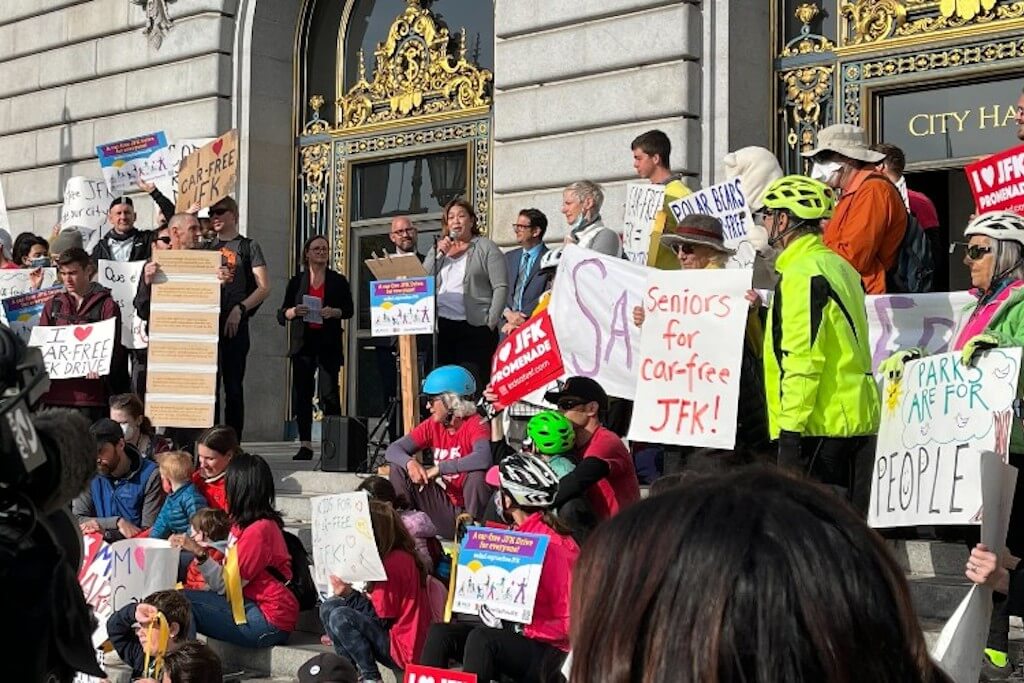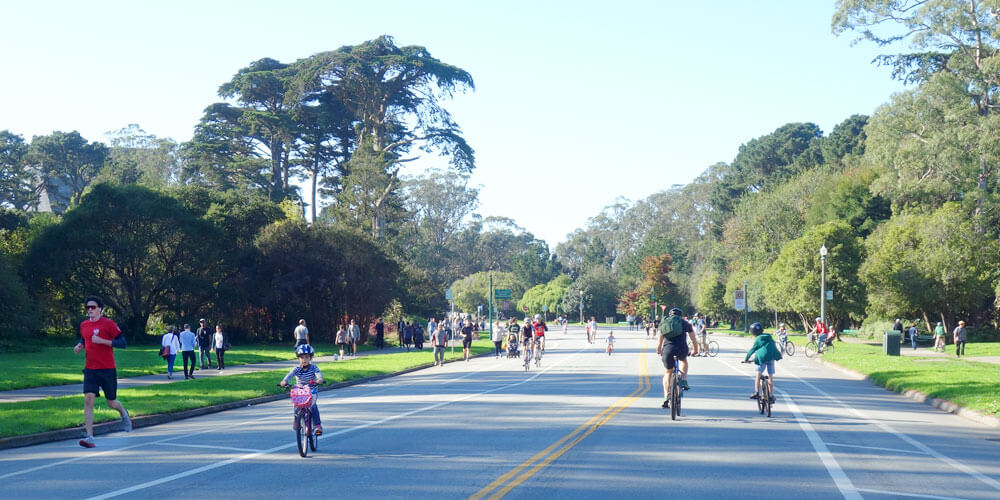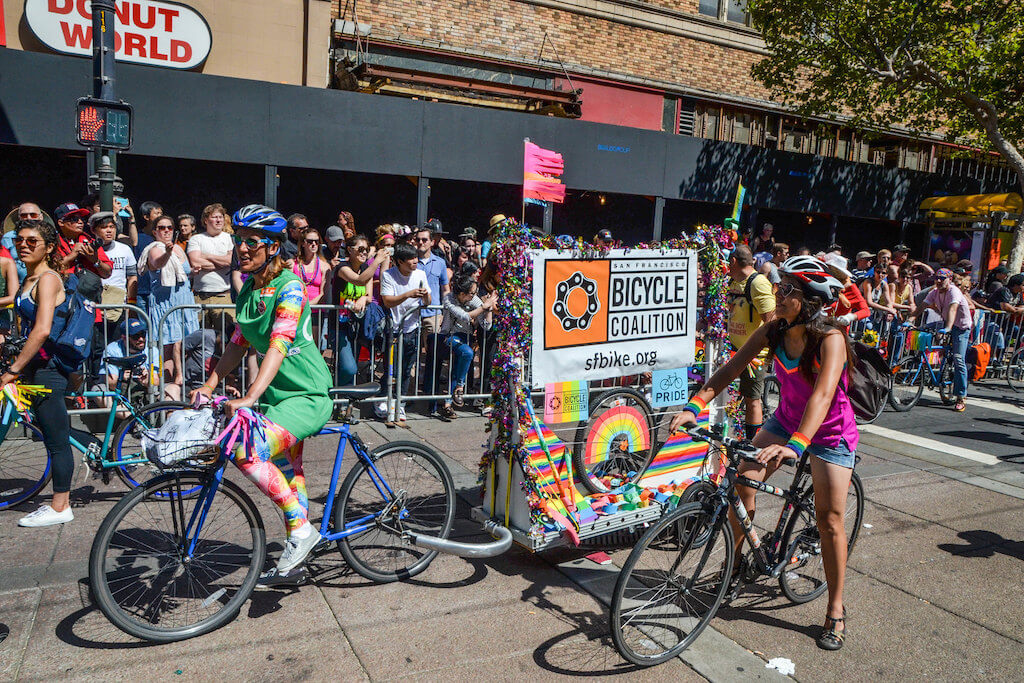Autumn Gear Guide
Find inspiration in our Gear Guide that will keep you out on your bike through wind or rain.
Download NowWhen it comes to bicycle-friendly cities in the United States, San Francisco is often at or near the top of the list. And it looks like it might remain that way for a while thanks, in part, to the work of the San Francisco Bicycle Coalition and its success in securing the city’s first car-free […]
When it comes to bicycle-friendly cities in the United States, San Francisco is often at or near the top of the list. And it looks like it might remain that way for a while thanks, in part, to the work of the San Francisco Bicycle Coalition and its success in securing the city’s first car-free thoroughfare, as well as its continued advocacy for safe streets.

For the last 45 years, SFBC has been promoting the bicycle for everyday transportation, and this year, it got a new executive director in long-time coalition member Janelle Wong.
It was Wong and the SFBC who successfully lobbied to finally create a 1.5-mile car-free promenade out of a slice of John F. Kennedy Drive that winds through beautiful Golden Gate Park, which is the third most visited park in America.
This win is the result of decades of work from previous and current SF Bicycle Coalition staff, volunteers, community members, and advocates.
“I think the San Francisco Bicycle Coalition started on this back when we were a very grassroots organization, meaning maybe there were five people 40 years ago. But you know, it started before that, in the 70s for people to use JFK for rollerskating,” she says, “So this has been decades in the making, and we’ve gotten little pieces over the years.”
Wong explains that the first win was Sunday road closures for six months of the year, then 12 months, then Saturdays were added and so on. And this was decades ago.
“We’ve always wanted it to be closed to cars,” Wong says. “I think as an organization, I think as a membership, we’ve always wanted that one-and-a-half-mile stretch of road to be a people-first space. And I think that the emergency order shutting it down, I think for the first time allowed people to see what seven days a week, 24 hours a day of closing that street looks like and what it feels like.”

Apparently, it felt pretty good, as the San Francisco Board of Supervisors, in a special joint meeting with the SFCTA, voted 7-4 to approve Mayor London Breed’s legislation for the car-free promenade.
Wong grew up in Los Angeles, and rode a bicycle as a kid, — Huffy, banana seat —and again in college, but dropped it for a while before moving to San Francisco and starting a family. Then it clicked.
“I needed to find a way to one get to work without having to drive a car and get some exercise as a mom trying to just kind of get back in shape,” Wong says. “So I picked up cycling because, near my house, a new bike lane appeared on Seventh Avenue. One day it wasn’t there. And then the next day it was, and it made it possible.”
She researched how that bike lane arrived on her doorstep and learned about the (ridiculous!) three-year injunction to stop all bike infrastructure until this particular piece of urban cycling heaven was approved. And she learned that the organization that made it happen was the San Francisco Bicycle Coalition.
“I think that day I became a member and I’ve been a member of the organization for 15 years now,” she says, adding that she began to work at the organization years as an operations manager in 2014. “I guess you could say I was going through a transition in my own life. And I wanted to give back to a cause and a mission that I believed in.”
This year, Wong took over as executive director.
“The former AD is a friend of mine. And I was happy and pleased to support him in continuing moving this organization forward,” Wong says. “And then when he left, they were looking for somebody. And yeah, I thought, well, maybe this is the time for me to be the leader of the organization. And the city is changing tremendously, as you know.”
Right now, the coalition has more than 10,000 members. And although JFK Drive is a huge win, there is much more to do.

“We obviously would like to carve out more people-first spaces in parks. It’s amazing, I think, for everybody’s mental health and well-being not just for cyclists, but for every resident of the city,” Wong says. “And I think that the goal now, at least in our organization’s mind, now that we have this people-first space that cyclists can use as part of their commute route, is to create a network of slow streets where they put essentially cyclists and pedestrians use as a priority on those streets. A network that reaches every corner of the city and allows people to change their mode of transportation and how they get around.”
It’s a challenge in every city in North America, but San Francisco has the added challenge of some seriously steep streets. So we asked, just what is the best way to navigate that elevation?
Well, there are ways to get around the hills, although sometimes you have to go a little bit further,” she says. “The tips are always to try to find a low gear and just try to ride as slow and steady as possible. Some of the hills are just not ridable. But you know, I think as you continue to do them that you get in pretty good shape around here just riding around.”
When asked about San Francisco’s rank as one of the more bicycle-friendly cities in America, Wong does agree but notes that they can do better.
“As somebody who’s been riding in this city for over 15 years, you know, I still have concerns with my 15-year-old son riding his bike around the city alone without me,” she says. “I prefer that he take transit. So in some ways, we still have lots of work to do. I think in a city the size of ours, it’s possible. But I think overall, San Francisco has come a long way compared to other American cities. So we do belong on the list, but we certainly have a ways to go.”
And she understands that the shift in modes of transportation will not happen overnight unless, of course, these gas prices continue to spike. It might be one day a week cycling to work for some, and that’s OK. It’s all progress.
“I recognize that not everybody wants to ride their bike every day for transportation like myself,” Wong says. “But if we can shift more folks to use alternative forms of transportation other than the private vehicle in our city, I think it will do wonders not only for our climate goals as a city but also I think not just the overall livability of our city.”
Find inspiration in our Gear Guide that will keep you out on your bike through wind or rain.
Download Now
Leave a comment